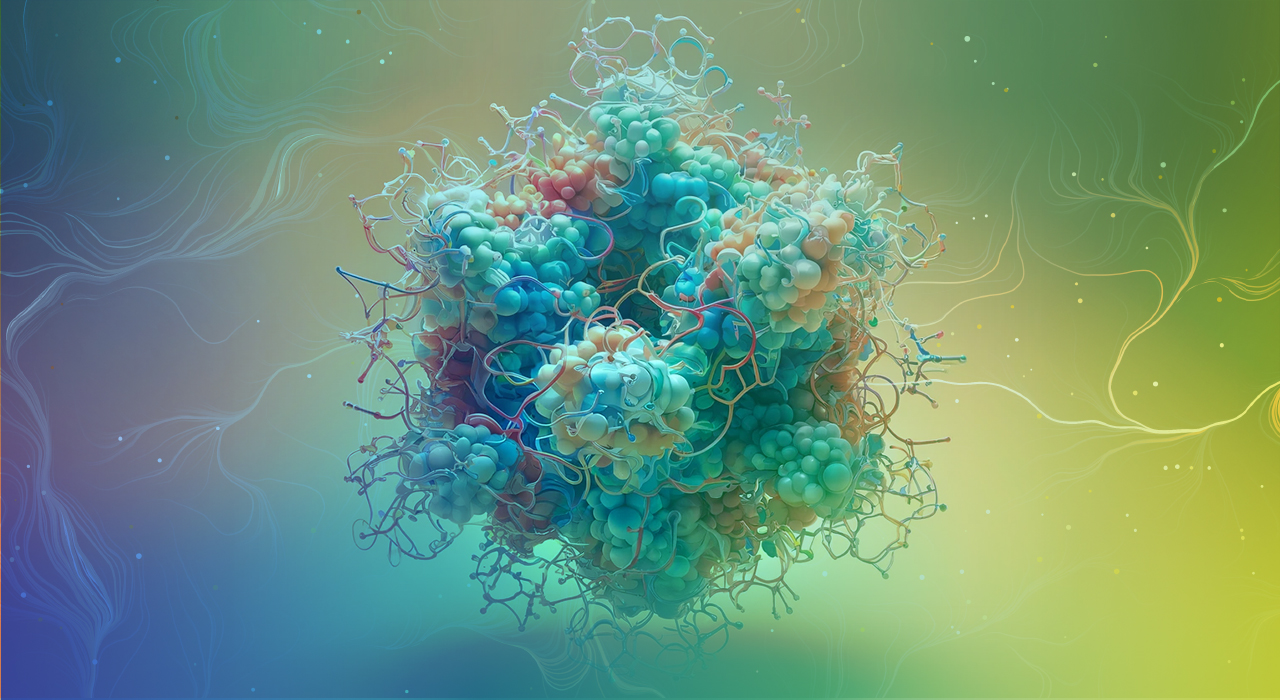Blog

Written by Dean Ihemesie
Introduction
Personalized medicine, also known as precision medicine, is a rapidly evolving approach to healthcare that can tailor treatment and prevention strategies to an individual's specific genetic makeup, environment, and lifestyle. Unlike the traditional "one-size-fits-all" approach, it recognizes that we are all biologically unique, and what works for one person might not be optimal for another.
The genetic aspect of precision medicine leads us to the discussion of pharmacogenomics or PGx. PGx is a discipline that combines both pharmacology and genetics; PGx focuses on how an individual’s genetic makeup can potentially influence the efficacy and metabolism of certain drugs with CYP2D6 playing a significant role in drug metabolization. While precision medicine is still in its early stages, it has the potential to revolutionize healthcare and pharmacogenomics has the potential to enhance drug development, reduce adverse reactions, and lead to significant efficiencies and cost savings in healthcare. In this blog, we will uncover the vital role of CYP2D6 and how it relates to both precision medicine and PGx.
Personalized Medicine
Precision medicine marks a significant advancement in healthcare, moving beyond the traditional blanketed approach. It uses information about a person's unique genes, lifestyle, and medical history to tailor strategies for disease prevention, diagnosis, and treatment (Abul-Husn et. al. 2014). Personalized medicine also has enormous potential to pinpoint individual disease risks, allowing for earlier and more targeted interventions. Genetic predisposition testing identifies individuals at higher risk for specific diseases, enabling targeted preventive measures or early intervention strategies.
Personalized medicine can factor in your genetics along with lifestyle factors like diet and exercise, resulting in more effective health plans; with an emphasis on prevention, personalized medicine can lessen the overall strain on healthcare resources from late-stage or unmanageable disease and potentially streamline treatment. This transformation in healthcare promises a future where treatments are designed specifically for you, leading to improved outcomes and a healthier life.
Pharmacogenomics
At the basic level, pharmacogenomics studies how your genes influence your body’s response to medications. The aim of this is to use the information obtained through PGx to select the medication that will most likely work for you, with the best dosage, and the fewest possible side effects, all based on your genetic profile.
A change/variation in a single base position is known as a single nucleotide polymorphism, or a SNP. These variations in sequence occur throughout your genome, and many SNPs play a pivotal role in how your body reacts to medications. Pharmacogenomics generally focuses on SNPs located in genes that are essential for drug metabolism, and its these variations that lead to your metabolic phenotype when it comes to medications.
PGx has many benefits, such as improving drug effectiveness by removing the guesswork out of selecting your medications. Reduced side effects, by identifying genetic variations that can potentially influence your drug metabolism. Medication dosing can also be optimized by relying on key genetic indicators that can help prevent you from taking a too low or high dose.
In addition to all the individual benefits, PGx can also benefit the health care system. Adverse drug reactions (ADRs) aren't just a clinical concern, they also have a significant economic impact. Hospital admissions, extended stays, and emergency room visits due to ADRs strain healthcare systems. The FDA estimates that in the US, over 6.7% of hospitalized patients experience a major ADR, leading to healthcare costs associated with over 100,000 deaths per year. (Lazarou et. al. 1998)
Drug Metabolism
Drug Metabolism is the process your body uses to break down and change the chemical structure of medications after they’ve been taken, this is extremely important because it can impact how well the medications work and whether or not you might experience additional side effects. Cytochrome P450 or abbreviated as CYP is a family of enzymes that are primarily found in the liver, but also present in other tissues such as the intestines, lungs, and kidneys. These enzymes play a critical role in how your body metabolizes certain drugs.
The CYP family is composed of over 50 enzymes, with each enzyme targeting specific molecules for breakdown. Drug metabolism is typically accomplished by a two-phase process: phase I and phase II, these phases do not necessarily happen in a specific order and it’s possible they can even occur at the same time (Mohanan, 2017). Phase I introduces new chemical groups to the reaction, or by modifying existing ones. These include a reduction reaction, which involves removing oxygen or adding a hydrogen, a hydrolysis reaction which involves splitting the drug molecule in the presence of water, and an oxidation reaction, which adds oxygen and changes the structure of the molecule, allowing your body to break it down more easily. Phase II reactions will typically have the drug or phase I product attached to another molecule that increases its water solubility so that it can be more easily excreted.
Drug metabolism is often categorized into four different phenotypes. A Poor Metabolizer or PM breaks down the drug very slowly potentially leading to a drug buildup and an increased risk of side effects. An Intermediate Metabolizer or IM has reduced metabolic activity when compared to normal. A Normal Metabolizer or NM has the typical metabolic profile, indicating that the drug is processed at the expected rate. Lastly, an Ultrarapid Metabolizer or UM breaks down the drug very quickly, possibly making it less effective (Kane, 2021)
Clinical Significance of CYP2D6
The CYP2D6 gene, along with the CYP2 family are located on chromosome 22; CYP2D6 encodes the cytochrome p450 CYP2D6 enzyme and plays a critical role in the metabolism of certain drugs. CYP2D6 is clinically significant because it is responsible for the metabolization of approximately 25% of commonly prescribed drugs across various therapeutic areas such as antidepressants, antipsychotics, beta-blockers, opioids, antiarrhythmics, and cancer treatments (Mohanan, 2017). Unlike other CYP2 enzymes with more consistent activity across individuals, CYP2D6 shows substantial genetic variations such as insertions, deletions, and substitutions. CYP2D6's genetic complexity and its critical role in metabolizing many drugs make accurate CYP2D6 genotype-based prescribing essential for successful pharmacogenomics.
In addition to SNPs, copy number variants or CNVs are an additional genetic variation that must be taken into account. CNVs are differences in our DNA where entire sections of the genome are repeated or even deleted, with the number of those repeats/deletions varying between individuals. While SNPs are a single base pair change that can affect one or a few genes, CNVs can involve much larger regions of DNA, potentially including multiple genes which can lead to a far greater potential impact (Jarvis et. al. 2019). Due to CYP2D6’s major role in drug metabolism, having multiple copies of the CYP2D6 gene can make an individual an ultrarapid metabolizer, while having deletions of the CYP2D6 gene leads to dis-functional enzyme, ultimately making that individual a poor metabolizer (Taylor et. al. 2020).
The Future of CYP2D6 and PGx Testing
CYP2D6 and the broader field of pharmacogenomics offer a relatively new and refreshed perspective on drug therapy. Understanding how genes like CYP2D6 influence medication response empowers both doctors and patients with the information they did not have before, so that we can take a different approach. There's undeniable potential to optimize treatments, personalize dosages, and minimize the risk of adverse reactions.
However, it's important to acknowledge that this field is still developing. As research progresses, we'll gain a more thorough understanding of CYP2D6 variants, their interplay with other genes, and how environmental and lifestyle factors might alter their effects. This will be crucial for refining test interpretations and developing the most effective personalized treatment plans.
PGx testing, including CYP2D6 genotyping, is likely to become standard practice in the future. To fully realize its benefits, we need to address challenges like accessibility, cost-effectiveness, clinician education, and the refinement of guidelines. Collaboration between researchers, healthcare providers, and regulatory bodies is essential to pave the way for widespread and responsible implementation of PGx.
Ultimately, CYP2D6 and PGx represent a significant step forward for precision medicine. They hold the promise of treatments tailored specifically to an individual's unique genetic makeup, potentially leading to safer, more effective medications and a better quality of life for countless patients.
References
- Abul-Husn NS, Owusu Obeng A, Sanderson SC, Gottesman O, Scott SA. Implementation and utilization of genetic testing in personalized medicine. Pharmgenomics Pers Med. 2014 Aug 13;7:227-40. doi: 10.2147/PGPM.S48887. PMID: 25206309; PMCID: PMC4157398.
- Lazarou J, Pomeranz B, Corey PN. Incidence of adverse drug reactions in hospitalized patients: A meta-analysis of prospective studies. JAMA 1998;279:1200–1205.
- Mohanan Geetha Gopisankar. (2017). CYP2D6 pharmacogenomics. Egyptian Journal of Medical Human Genetics, 18(4), 309-313.
- Kane M. CYP2D6 Overview: Allele and Phenotype Frequencies. 2021 Oct 15. In: Pratt VM, Scott SA, Pirmohamed M, et al., editors. Medical Genetics Summaries [Internet]. Bethesda (MD): National Center for Biotechnology Information (US); 2012-. Available from: https://www.ncbi.nlm.nih.gov/books/NBK574601/
- Jarvis JP, Peter AP, Shaman JA. Consequences of CYP2D6 Copy-Number Variation for Pharmacogenomics in Psychiatry. Front Psychiatry. 2019 Jun 20;10:432. doi: 10.3389/fpsyt.2019.00432. PMID: 31281270; PMCID: PMC6595891.
- Taylor C, Crosby I, Yip V, Maguire P, Pirmohamed M, Turner RM. A Review of the Important Role of CYP2D6 in Pharmacogenomics. Genes (Basel). 2020 Oct 30;11(11):1295. doi: 10.3390/genes11111295. PMID: 33143137; PMCID: PMC7692531.

